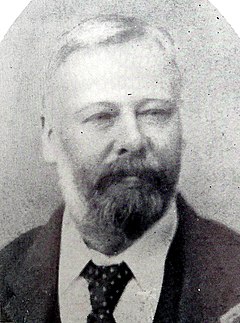
Harrogate is a spa town in the district and county of North Yorkshire, England. Historically in the West Riding of Yorkshire, the town is a tourist destination and its visitor attractions include its spa waters and RHS Harlow Carr gardens. 13 miles (21 km) away from the town centre is the Yorkshire Dales National Park and the Nidderdale AONB.
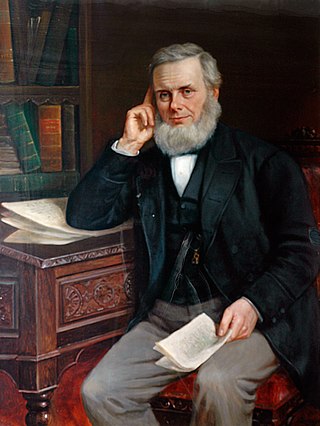
William Grainge was an English antiquarian and poet, and a historian of Yorkshire. He was born into a farming family in Dishforth and grew up on Castiles Farm near Kirkby Malzeard in the North Riding of Yorkshire, where he studied the archaeological site beneath the farm buildings, now known as Cast Hills settlement. Although he left school at age 12, he educated himself well enough to become a clerk to a solicitors' firm in Boroughbridge. He later established a bookshop in Harrogate and published numerous books on local history and topography, besides publishing a number of anonymous poems and discourses about local natural history.

St Wilfrid's Church, Harrogate is an Anglican parish church in the town of Harrogate, North Yorkshire, England. It is a Grade I listed building, the only such building in Harrogate. It was designed by the architect Temple Lushington Moore and is one of his best-known works. It is designated as a "Major Parish Church" and is the 38th largest parish church in England.

West Park United Reformed Church is located in the West Park area of Harrogate, England, and is a Grade II listed building. It was designed in Nonconformist Gothic style as West Park Congregational Church by Lockwood & Mawson and completed in 1862 for around £5,000. Along with Belvedere Mansion across the road, it was intended as part of the prestigious entrance to the Victoria Park development. For the Congregationalists it was meant to house an increasing congregation of visitors brought to the spa town by the recently-built railways. It became a United Reformed church in 1972.
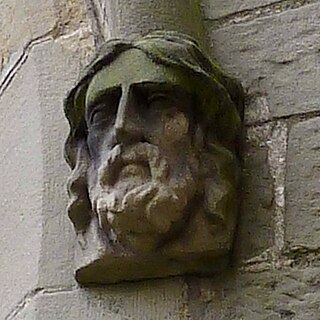
William Ingle was an architectural sculptor in Leeds, West Yorkshire, England. He specialised in delicately undercut bas relief and small stand-alone stone sculptures of natural and imaginary flora and fauna on churches and on civic, commercial and domestic buildings. He was apprenticed to his uncle Robert Mawer. After Mawer's death in 1854 he worked in partnership with his aunt Catherine Mawer and his cousin Charles Mawer in the company Mawer and Ingle. Notable works by Ingle exist on Leeds Town Hall, Endcliffe Hall, Sheffield and Moorlands House, Leeds. He sometimes exhibited gentle humour in his ecclesiastical work, such as faces peering through greenery, and mischievous humour on secular buildings, such as comic rabbits and frogs among foliage. He died of tuberculosis at age 41 years, having suffered the disease for two years.

William James Morley FRIBA was an English architect who practised from offices in Bolton, Greater Manchester and Bradford, West Yorkshire.
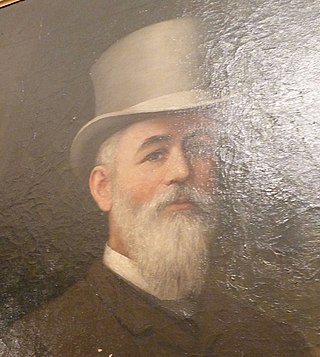
Isaac Thomas Shutt was an architect, a farmer, and the proprietor of the Old Swan Hotel, Harrogate, then in the West Riding of Yorkshire, England, from 1849 to 1879. In 1842, at the age of 24 years, he designed the Royal Pump Room, Harrogate, now a Grade II* listed building. In partnership with Alfred Hill Thompson he co-designed the Church of All Saints, Harlow Hill.

The Church of All Saints, Harlow Hill, Harrogate, North Yorkshire, England, is a grade II listed mission church, or chapel of ease, completed in 1871 on land donated by Henry Lascelles, 4th Earl of Harewood, within the parish of St Mary. It was consecrated by the Bishop of Ripon in 1871. The building was designed with a round bell tower, in Gothic Revival style, by Isaac Thomas Shutt and Alfred Hill Thompson. After some years of closure due to structural problems, as of 2014 it was being restored for use by a funeral director's company.

John Peele Clapham, from Leeds, West Riding of Yorkshire, was a justice of the peace for the West Riding of Yorkshire, and treasurer for the county courts of Yorkshire.
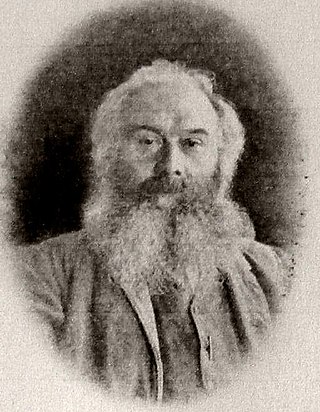
John Farrah, F.L.S., F.R.Met.S was a British grocer, confectioner, biologist and meteorologist from Harrogate, North Riding of Yorkshire, England. In the late 19th century he developed the business strategy for Farrah's toffee shop which he inherited from his family in Harrogate. He was made a fellow of the Meteorological Society in 1894. He was president of the botanical section of the Yorkshire Naturalists' Union, working with Thomas Sheppard, George Edward Massee, William Eagle Clarke and Charles Crossland, and in 1903 discovered the mycological species Entoloma farrahi, which was named after him, although there has been some question as to its identity since then. He was a close friend of Harrogate historian William Grainge and for some years they were "constant companions", supporting each other in their work. The American mycologist George Francis Atkinson described him as a "great Yorkshire character". Farrah married three times, and had three children.

The Harrogate Club is a private members' club, open to men and women, based in Harrogate, North Yorkshire, England. Founded in 1857, it is located on Victoria Avenue, Harrogate.

Thomas Holroyd was an English portrait and landscape painter working in Harrogate, North Riding of Yorkshire, England. Before his marriage he undertook painting tours to the United States, Canada, Europe, Egypt, Russia and the Holy Land. Returning to Harrogate, he painted portraits of the local worthies there. He shared responsibility for the successful photography business T & J Holroyd with his brother James, and continued to run the business after his brother died. Holroyd was a founding member of Harrogate Liberal Club.
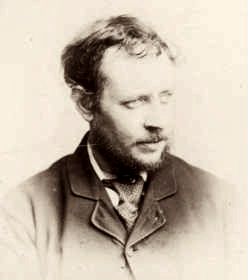
Bernard Walter Evans was a British landscape painter and watercolourist in the Romantic style, working mainly in Birmingham, Wales, London, Cannes and the North Riding of Yorkshire. Because he used a "heavy, cumbrous" horse-drawn van to reach remote sites in Yorkshire, his nickname there was Van Evans, and he was recognisable with his wideawake hat, pipe and neckerchief. He was known for his arduous days of painting in the hard Yorkshire winters, with frozen water pots, little food, and only a paraffin stove to warm his hands.

The Jubilee Memorial, Harrogate, is a Grade II listed building. It is a Gothic Revival stone memorial in Harrogate, North Yorkshire, England, commemorating the 1887 golden jubilee of Queen Victoria. It was donated to Harrogate by its mayor, Richard Ellis, designed by architect Arthur Bown, and unveiled by the Marquis of Ripon.

Grove Road Cemetery, Harrogate, North Yorkshire, England, was formerly known as Harrogate Cemetery. It was established in 1864 after the spa town expanded and the graveyard at Christ Church became full. The cemetery once had a pair of chapels with spires, designed by Thomas Charles Sorby. Although they were admired by local residents who felt it enhanced the town view, they were demolished in 1958. However the lodge and gates, also designed by Sorby, remain.

Robert Ackrill was an English journalist, newspaper proprietor, founder of newspapers, printer and writer, working for most of his career in Harrogate, England. During the 19th century he owned six newspapers in the North Riding of Yorkshire via his company Ackrill Newspapers, having founded three of them. Ackrill's descendants and relatives continued to run or be involved with Ackrill newspapers for at least a hundred years, the final incarnation of the company under that name being dissolved in 2020.

George Dawson was an English builder, property developer and alderman. The son of a village labourer, he was a self-made man who started as a cooper, became a rich entrepreneur and built himself a mansion.

Richard Ellis was an English builder, property developer, alderman, mayor, and a public benefactor to his town. The son of a blacksmith, he was a self-made man who started as a joiner and became a rich developer who joined High and Low Harrogate into a single town, helped obtain a Charter of Corporation, and promoted the erection of civic buildings appropriate for a spa town. Thus he became known as the Bismarck of Harrogate, his achievement in joining two villages to create a single town having been wittily compared in the 19th century with Bismarck's unification of Germany.

David Simpson was an English builder, politician, property developer and contractor who was four times mayor of Harrogate, and three times deputy mayor. He developed the whole of the Duchy Estate, a major residential quarter for the rich, more than doubling the rateable value of the town in the first quarter of the 20th century. He was a member of Harrogate Borough Council for 34 years, making him the "father" of the council by the end of his career there. He was a justice of the peace and the first honorary Freeman of the Borough of Harrogate. He was president of the Bilton Ward Conservatives, a member of the Knaresborough Board of Guardians and an alderman of West Riding County Council. He built himself a large, castellated mansion called Oakdale, in 1903, besides the even larger Grand Hotel in Harrogate in the same year..
John Turner was an English draper, landlord, and moneylender, whose perceived behaviour led to his reputation as a miser.
